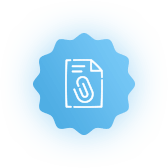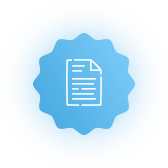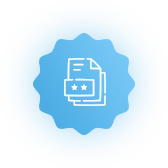Our Perfect Essay Writers Are Always at Your Service!

An Assessment of the Impact of Social Media on the Syrian Crisis and Revolution
As technology continues to improve, so do the different ways of human interaction. One of the most successful ways that people have managed to enhance their interaction is via the social media. The on-line platforms like Twitter, YouTube, Facebook, and Instagram have helped connect people from all corners of the world, making it appear like a global meeting point. Unlike the traditional communication means such as mail services, social media is fast, easy to access, and packed with unfiltered information, which makes most people prefer this new way of interaction and socialization. However, despite all the significance that social media has brought, it also has its weaknesses. For example, in the recent past, it started being used in shaping politics across the world and spearheading evil activities like terrorism (Bebawi 2014). This paper aims at assessing the role that the social media has played in Syria since the 2011 uprising to the current crisis.
The Syrian revolution has always been believed to have started in June 2011 when citizens across the country started protesting against the government that killed three children who had drawn pictures with anti-government sentiments (Axford 2011). In the country lead by dictatorship, the spread of information through the conventional media was almost negligible and thus people saw the need to use a more efficient way of communication. Social media proved to be pivotal in this new mission as it was the only way in which the government would not control what people spread among themselves.
First, the social media made some difference to the war as it introduced a channel in which people would motivate each other. Twitter and Facebook, which are the most common social media, were used to challenge people from different parts of the country to protest just like their colleagues in other cities (Axford 2011). Such provocation thus drove the Syrians who were not even willing to participate in the turmoil to come out and call for the resignation of Al-Assad. If the social media was not in use at that time, the uprising could not have been possible as only a few people would turn out to protest.

• TOP 10 WRITERS •
Your order will be assigned to the most experienced writer in the field. The highly demanded expert, one of our top-10 writers with the highest rate among the customers.
The social media were also important in spreading global information. Via these channels, the Syrian people received information about the similar uprisings in other Arabic countries. These online platforms informed them about the successful revolutions in countries like Tunisia and Egypt (Axford 2011). The Syrians were thus aware that they could also remove their totalitarian regime from power if they protested just like the other Arabic nations did. Such wide distribution of information was uniquely made possible by the social media and changed the way people were informed as well as what people were fighting for. If they had not discovered about other revolutions, maybe they would not have dared to resign Al-Assad or even go out demonstrating in the streets.
The Percentage of the Population Using Social Media during the Crisis
The Syrian population is not much known for their participation in the social media projects or communities. This is not surprising as the Syrian government had been filtering the social media like Twitter, YouTube, and Facebook from the year 2007 to February 2011. Most Syrians were thus not comfortable to join these online interaction platforms. By the year 2011 when the uprising started, Syria had an estimated 22 million population, of which 12 million were active phone users (Ahmad & Hamasaeed 2015). However, not all phone users could access the internet or enrol to social media websites.
According to a 2011 data on Facebook followers, it has been identified that only 17.44% of the country’s population were using Facebook at that time, namely only slightly over 3.8 million people who could be called Facebook active users. The figure was much lower on other platforms like Twitter and YouTube, and in most cases, those using Facebook were also the same who opened other social media platforms accounts. The population of all internet users and social media account holders equalled four million Syrians just before the onset of the uprising (Ahmad & Hamasaeed 2015). Such number is believed to have increased as people became more reliant on social media for information during the crisis. However, there is no official data today which could show the precise number of social media users in the then country.
Why us?

Expert authors with academic degrees

Papers in any format: MLA, APA, Oxford, Harvard

24/7 livecustomer support

Only authentic papers plagiarism and AI free

Absolute confidentiality

Decent prices and substantial discounts
Our custom writing service is your shortest way to academic success!
Order NowCause and Effect on Relationship of Social Media in the Syrian Crisis
Several factors resulted in the use of social media in the Syrian revolution. First, the government was dictatorial and thus the flow of information was limited to the general public. The Al-Assad government had a total control of all the media companies in the country. The circulation of information to people in public gatherings and schools was also disseminated as per the government’s will (Lynch, Freelon & Aday 2014). There was no way possible that the Syrian people would have access to all information that they needed. Therefore, the protesters had no otherwise but to choose a channel that the regime would find hard to regulate. The social media was perfect and that is why most protesters adopted it immediately.
Another reason that led to the use of social media was the people who were involved in the protest. A study on the uprising has shown that the average age of those involved was twenty-three years. Such statistics show that these were the young people, conversant with the internet and social media, that participated in the uprising (Lynch et al. 2014). Consequently, his population had an advantage of prior connectivity with their friends. Besides, they found it a cheap and fast way to share information about the uprising.
The necessity for the spread of disseminating information also played a part in the use of social media during the revolution and at the time of crisis. Other forms of sharing mass information like traditional media are mostly slower as they require the journalist to travel and collect the needed data (Lynch et al. 2014). However, that is not the case with social media. The events taking place in one location can just take few seconds to reach all parts of the world. Such efficiency in the distribution motivated most people to use this platform as the information awareness was needed urgently to help strategize on how to protest against the regime quickly and effectively.
Our Lifetime Discounts:

Exclusive savings! Save 25% on your ORDER
Get 15% OFF your FIRST ORDER (with the code perfect15) + 10% OFF every order by receiving 300 words/page instead of 275 words/page
As for the effect on the relationship, one significant change that the use of social media brought was unity. Syrians had never been united in the entire country as they had no unifying factor. The state skilfully and easily manipulated the relationship between one person and the other, and they had been used to such kind of treatment (Kase et al. 2014). However, the social media gave them a different perspective about their unity. They saw an opportunity in which they would alter their relationship and the attitude of the government.
Social media went ahead to help the opposition organize the biggest protest that the country had ever witnessed. The relationship of the Syrian people was already altering by the influence of social media and they knew they would achieve much more (Kase et al. 2014). Hence, it was very beneficial for the formation of separatism as the unity had already been created and it is through the use of social media the solidarity that Syrians plugged into a civil war was born.
Control of Internet Service Providers Totalitarian Regime
Since the commencement of the uprising in Syria in 2011, the government of Al-Assad tried all its best to keep the social media in control. And because the social media is an online platform, one of the primary ways in which this regime ensured people’s use of social media was regulated was by controlling the internet provider. The monitoring started just after the protest began in the main cities across the country (De Angelis 2014). On June 2, 2011, when people staged massive demonstrations protesting in honor of three children killed by the regime, the government realized that such activity was successful due to the easy transfer of motivational information via the social media. In two days, the government shut down the internet in the entire country, thus driving the protesters into uncertainty due to lack of information.
On 26 July 2011, the government also blocked a website named the-syrian.com which was providing helpful information about the rights of individuals against or with the regime. This site was the primary weapon which most social media users were utilizing in attacking the administration for what it was doing wrong based on the country’s constitution (De Angelis 2014). The regime was not happy about this website as it was motivating people to fight for their rights and went ahead to block the site.
Writing Quality
Make the right choice and get the perfect quality papers
Standard value
(Standard value) The task is being completed by one of our professional writers according to the deadline specified - we make sure the script is handled by an appropriate specialist of the particular field of study.

Premium value
(+10% of the order total amount) This option is for clients who want their order to be quickly assigned to one of our professional writers. The premium quality also means that the final paper will be a subject to additional plagiarism checks, and the client will receive a PDF file with a detailed plagiarism report created by our professional editors.

Supreme value
(+15% of the order total amount) Apart from a “Detailed Plagiarism Check” option, our online agents will try to urgently assign a writer among the top 30 best company writers. Your order becomes of the highest priority for us. If you want your order to be our TOP priority, select this option.

In October 2011, it turned out that the government of Syria was also involved in a widespread censor web activity. A software and hardware company in the US stated that it had reliable information to believe that the al-Assad government was using its blue coat products to filter the information from several websites. Such claims were later confirmed when Telecomix, a hacktivist group, accessed the unprotected site in the Syrian government and found that the regime had been engaged in internet filtering (De Angelis 2014). Most of the evidence pointed to filtering in social media like Twitter and Facebook as an effort by the regime to reduce the effect of the spread of information which was causing opposition to unite solidly.
Other internet provider attack by the government included the lasting termination of connection across the country. In 2013, it was believed that the government sponsored at least ten countrywide cut-offs of the internet (De Angelis 2014). The same trend also continued in 2014 when several disconnections were carried out mostly to block the general public from spreading information about the atrocities that the regime was causing to its people.
The Syrian Electronic Army
Apart from controlling the connection of Syrian users to the internet, the government also had an army organ that defended the al-Assad regime on the web. Syrian Electronic Army had been initiated several years before the 2011 revolution but its main activities have been recorded since this period (Bebawi 2014). The group comprises several computer hackers who penetrate the information system and websites both in Syria and other nations of interest so as to spearhead the al-Assad government agenda and propaganda.
Concerning the social media, this army group used its superiority in internet and computer hacking to distort the news and give false information to the world. For example, in April 2012, this Syrian Army hacked into the LinkedIn website and the internet site of this social media was redirected to other locations which supported the regime of al-Assad. Such redirecting had an enormous impact on the Syrian crisis because most people who visited LinkedIn during this time were forced to read the information about the Syrian government which was not necessarily true (Bebawi 2014). The electronic army was successful on this occasion by using the social media to present false information about the Syrian civil war to a large number of people across the world using LinkedIn.
Our Free Features
Our agency is the one which can provide you with effective
academic writing projects. There are many features that are offered by our agency for free,
namely:

A title page

Table of contents

An abstract

A reference page /
bibliography

An outline
(on request)
Another attack on the social media by this army took place in the month of August 2012 when they hacked the Twitter page of Reuters. Reuters is a global media station and the information disseminated by this organization, both in its conventional and social media, tends to be trustworthy and has a great impact on the world. With such realization, the Syrian Electronic Army was able to hack into their Twitter account and posted a series of twenty-two tweets which gave a wrong insight about the conflict in Syria (Bebawi 2014). Such posting was a huge success to the government as it misled people from the outside world and discouraged them from accessing the real information about what was happening in Syria during that time.
The other noticeable attacks on social media by this army include the 2013 The Associate Press Twitter account hack, which also led to controversial tweeting. The tweet stated that the United States White House was bombed and President Obama was severely injured. Such posting resulted in a dip in S&P 500 index with a huge margin and became the indication of the catastrophic effect of the Syrian Electronic Army (Bebawi 2014). The ITV News London Twitter account was also attacked in 2013, resulting in a false posting by the group. Lastly, this team also used URLs to redirect the visitors to Obamas Twitter and Facebook accounts to a short video in YouTube full of Al-Assad government propagandas.
Social Media Used for Propaganda to Escalate the Crisis by the Oppositions
The opposition in Syria also has used the social media to their benefit to support their claims. On the onset of the revolution, the use of internet and social media by the protesters was distinguished as the most powerful way of spreading information as discussed earlier (Cockburn 2016) However, after the country plugged into the civil war, spreading of factual information was no longer sustainable by the opposition. The separatists resorted into misusing the information in social media for their advantage as well.
One of the most famous cases when the opposition used the media to spread rumors and false information was in late 2016 when the Russian-backed al-Assad government was approaching the eastern part of Aleppo city held by the opposition. The western media was denied access to this region by the opposition fighter who claimed that it was dangerous and they could be kidnapped if they went there (Cockburn 2016). The humanitarian support from organizations like the United Nations was also cut off from this region and there was no other external media or sources of information. With such environment, the opposition found the most convincing way to manipulate people and governments across the world.
Paper details:
- 12-point Times New Roman
- 1-inch margins
- Plagiarism-free and AI-free
- 300 words/page instead of 275
- Single or double-spaced
Free Features:
- Free cover/title page
- Free table of contents
- Free abstract
- Free references/bibliography list
- Free outline (on demand)
As the Russian and al-Assad men approached the region, most people started twitting how they were about to be exterminated by the government. There was a flow of pictures and short videos in all social media which showed how the people were suffering in eastern Aleppo. The news about the approaching genocide was spread across the world and in no time such information became the number one trending issue in almost all social media (Cockburn 2016). The United Nations Security Council responded by convincing an urgent meeting which wanted to seek the solution to the issue.
However, later it was discovered that some of these videos and pictures were not real and some tweets did not even originate in Syria. They were just made up to encourage the western countries to intervene in favour of opposition (Cockburn 2016). Such an occurrence was a unique manifestation of how the social media was used for propaganda by the opposition in Syria when they tried to seek support from the rest of the world.
Conclusion
In conclusion, the above exegesis has assessed the role that the social media played in the Syrian revolution of 2011 and how the same has continued to influence the current crisis. It has been revealed that social media was accepted across the country where the government was controlling any other source of information. However, despite the importance of social media in the revolution, there are several highlighted problems that have risen due to its use. Both the government and the opposition have used it to spread propaganda, thus affecting the flow of actual information.
